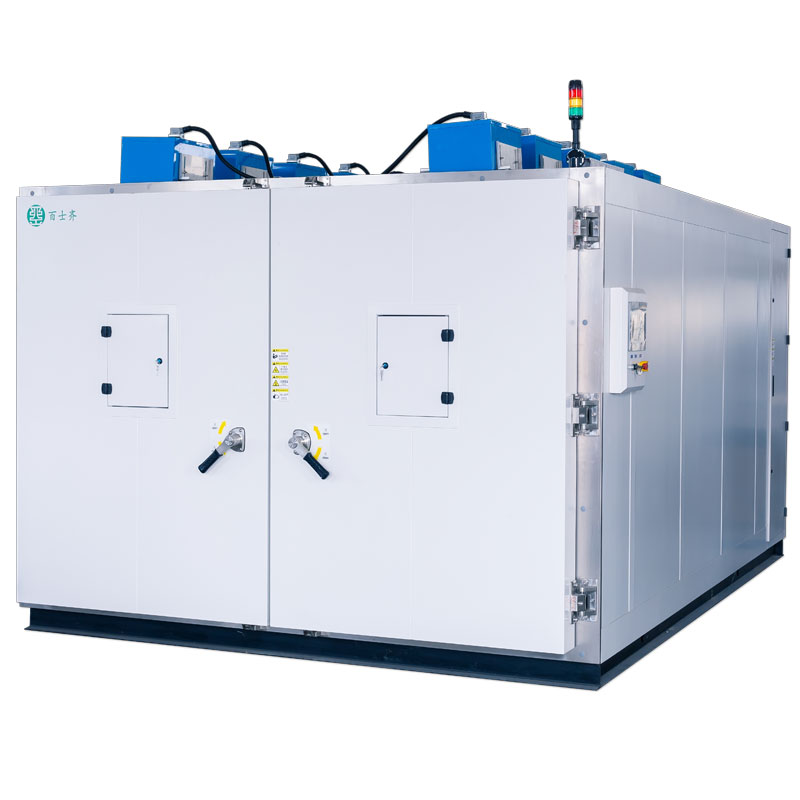1. Spectral distribution:
280~320nm accounts for 3~10% of the irradiance intensity in the range of 280~400nm.
2. Irradiance: 150~250W/m2
3. Effective irradiation area: 2.6m×1.5m×1pcs (one module)
4 Irradiance non-uniformity: within ±15% range
5. A calibrated irradiance meter capable of measuring the irradiance in the wavelength range of 280~400nm according to the UV test standard of IEC 61215-2:2021 should be installed inside the instrument. The calibration of 280~320nm is done using a spectrometer (not included in the instrument configuration).
7. Temperature control range: Component temperature during illumination: 60/70/80°C±5°C; Component temperature when not illuminated: RT+10°C~90°C Temperature sensor: movable, measuring the surface temperature of the module
8. Humidity control range (optional): 85±5%RH@85°C or according to ASTM standard (when not illuminated)
9. Equipped with a touch-screen industrial control panel, fully automatic and high-precision system circuit (horizontal and vertical). Any action of the equipment is completely locked and processed by the PLC. It includes automatic full-scale scanning of the irradiation probe, automatic integration of irradiance, data acquisition and storage. It also automatically stores the scanned data of the entire process of irradiance testing, automatically accumulates the irradiance dose, and displays the current irradiance dose.
10. In the event of a power failure or other sudden incidents, it can automatically continue cyclic testing after power is restored (starting from the interrupted part).
11. After the testing is completed, it can automatically emit a reminder signal and stop working.
